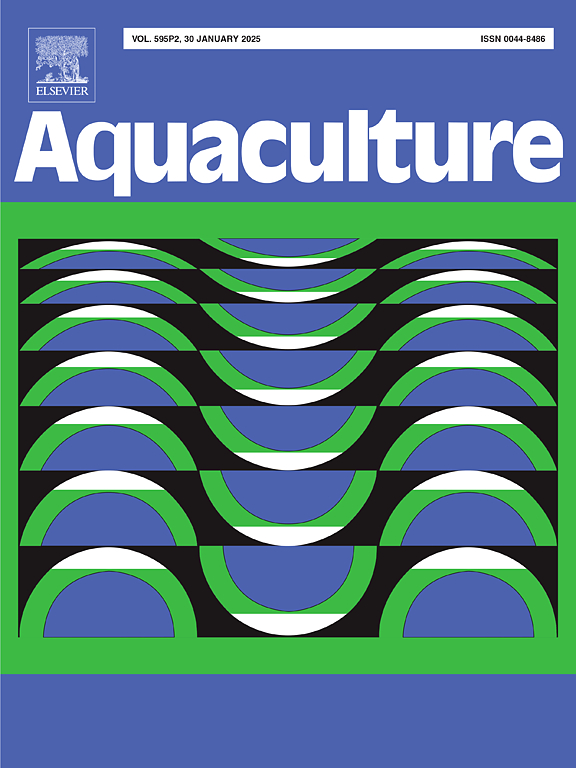New insights into feeding behavior and digestive physiology of the Chinese mitten crab (Eriocheir sinensis) zoea 5 (Z5) and megalopa (M)
IF 3.9
1区 农林科学
Q1 FISHERIES
引用次数: 0
Abstract
The metamorphosis from zoea 5 (Z5) to megalopa (M) stage represents a critical transit in the larval development of the Chinese mitten crab (Eriocheir sinensis). This study investigated the feeding behaviors and digestive physiology of Z5 and M stages through behavioral, morphological, and physiological analyses. The results of feeding behavior have showed: 1) M stage had significantly higher average swimming speed (3.42 ± 0.22 cm/s) than Z5 (1.22 ± 0.15 cm/s) at 07:00 am, 12:00 pm, and 17:00 pm (p < 0.05). 2) Only M stage preferred Artemia salina in mixed feed trials. 3) M exhibited a distinct feeding rhythm with intake at 07:00 am and 17:00 pm being 1.15 and 1.21 times higher than at 12:00 pm, respectively (p < 0.05). 4) M consumed approximately 1.8 times more food than Z5 (p < 0.05). The results of digestive physiology have showed: 1) Food accumulation in the hepatopancreas peaked at 60 min in Z5 and 120 min in M by situ observations of accumulation in the hepatopancreas after ingesting red algal powder, with faster food transit time in Z5 (25–50 min) compared to M (80–120 min) (p < 0.05). 2) Significant rhythmic changes in digestive enzyme activities (amylase, trypsin, lipase) and gene expression were observed during the Z5 and M stages, with peak levels at 07:00 am and 17:00 pm for most enzymes. These findings provide crucial theoretical insights for optimizing feeding strategies and enhancing the healthy cultivation of E.sinensis larvae, potentially leading to improved yield and economic value of megalopae in aquaculture.
求助全文
约1分钟内获得全文
求助全文
来源期刊

Aquaculture
农林科学-海洋与淡水生物学
CiteScore
8.60
自引率
17.80%
发文量
1246
审稿时长
56 days
期刊介绍:
Aquaculture is an international journal for the exploration, improvement and management of all freshwater and marine food resources. It publishes novel and innovative research of world-wide interest on farming of aquatic organisms, which includes finfish, mollusks, crustaceans and aquatic plants for human consumption. Research on ornamentals is not a focus of the Journal. Aquaculture only publishes papers with a clear relevance to improving aquaculture practices or a potential application.
 求助内容:
求助内容: 应助结果提醒方式:
应助结果提醒方式:


